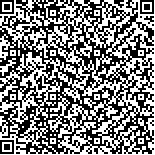| 引用本文: | 曹娟,张勇娟,李新一,王加亭,贠旭江,徐丽君,辛晓平,毛平平.遥感技术在青海刚察县草畜平衡研究中的应用[J].中国农业资源与区划,2020,41(10):138~146 |
| |
|
| 摘要: |
| [目的]刚察县草地资源丰富,是青海省环湖重点牧区之一,文章利用遥感技术对刚察县草地生物量进行了遥感估算,并在此基础上分析其载畜平衡状况,以期为刚察县草地资源利用、生态环境保护和区域经济可持续发展提供参考依据。[方法]利用2016—2018年刚察县的遥感数据、地面样方调查数据进行生物量估算,并利用牧业统计数据计算载畜平衡指标,在此基础上分析其载畜平衡状况。[结果](1)指数函数可以较好地模拟NDVI与生物量之间的相关关系,指数方程为:y=60137e093x(R2=066)。(2)2015年植被生物量较2010年有所增加,而2018年平均生物量较2010年持平,这一特征主要与气候和降水条件有关,2018年降水量较少、气候较干旱。2015年冬春草场生物量较2010年基本持平,2018年较2010年有下浮下降; 2015年和2018年夏秋草场比2010年均有小幅提高。(3)基于遥感估算的草地生物量结果和刚察县的补饲情况进行了草畜平衡情况分析,结果显示,2010年超载率为2308%,为超载; 2011年超载率为511%,2015—2017年分别为602%、690%、929%,均为草畜平衡。[结论]草畜平衡政策实施后,刚察县在减少草原可利用面积后,通过补饲减缓了天然草场的载畜压力,天然草场基本达到草畜平衡,有利于该区域草地生态环境的恢复和保护。 |
| 关键词: 遥感青海刚察县生物量估算草畜平衡 |
| DOI: |
| 分类号:S812 |
| 基金项目:草地碳收支监测评估技术合作研究( 2017YFE0104500);现代农业产业技术体系建设专项资金(CARS-34) |
|
| APPLICATION OF REMOTE SENSING TECHNOLOGY IN THE STUDY OF GRASSLAND LIVESTOCK BALANCE IN GANGCHA, QINGHAI PROVINCE |
|
Cao Juan1,2,Zhang Yongjuan1,4,Li Xinyi3,Wang Jiating3, Yun Xujiang3, Xu Lijun1※,Xin Xiaoping1,Mao pingping1
|
|
1. Institute of Agricultural Resources and Regional Planning, Chinese Academy of Agricultural Sciences, Beijing 100081, China; 2. Academy of Forest and Grassland Inventory and Planning, National Forestry and Grassland Administration, Beijing 100714, China; 3. National Animal Husbandry Service, Beijing 100125, China; 4. The Institute of Forestry and Grassland in Urumqi City, Urumqi 830000, Xinjiang, China
|
| Abstract: |
| Gangcha is rich in grassland resources and is one of the key pastoral areas around the Qinghai lake in Qinghai province. This research is intended to estimate the grass biomass of Gangcha by using the remote sensing technology, and analyzes the grassland livestock balance based on the grass biomass, so as to provide reference for the utilization of grassland resources, ecological environment protection and regional economic sustainability in Gangcha. The remote sensing data and ground survey data of Gangcha from 2016 to 2018 were used to estimate the grass biomass, and the agricultural husbandry statistics data were used to calculate the index of livestock load, then the status of grassland livestock balance was analyzed on this basis. The results were listed as follows. (1) The exponential function could better simulate the correlation between NDVI and grass biomass, and the exponential equation was y = 601.37e0.93x (R2 = 0.66). (2) Vegetation production increased in 2015 compared with that in 2010, and the average grass biomass in 2018 was the same as in 2010. This feature was mainly associated with climate and precipitation conditions, and there was less precipitation and the climate was more arid in 2018. The grass biomass in winter and spring pastures in 2015 was basically the same as that in 2010, and that in 2018 was lower than that in 2010. In 2015 and 2018, the biomass in summer and autumn pastures was slightly higher than that in 2010. (3) Based on the estimated results of grassland biomass by remote sensing technology and the supplementary feeding situation in Gangcha, the status of grass livestock balance was analyzed. The results showed the overload rate in 2010 was 23.08%, which was overload. That in 2011 was 5.11%, and that from 2015 to 2017 was 6.02%, 6.90%, and 9.29%, respectively, all of which were in the balance of grass and livestock. Although the available area of grassland in Gangcha decrease after the implementation of the grassland livestock balance strategy, the livestock carrying pressure on natural pastures slows down by supplementary feeding. The natural grassland basically reaches the grassland livestock balance, and it could be beneficial to the restoration and protection of the ecological environment of the grassland in the study region. |
| Key words: remote sensing Qinghai Gangcha county grass biomass estimation grassland livestock balance |

